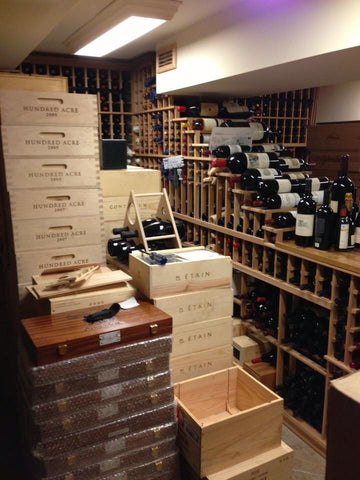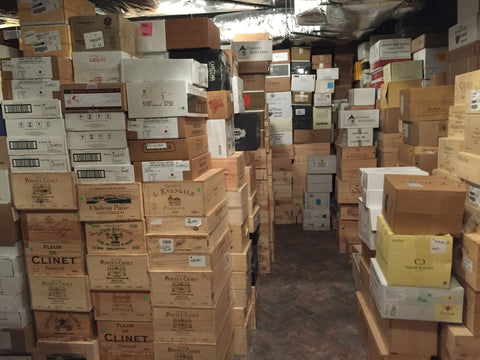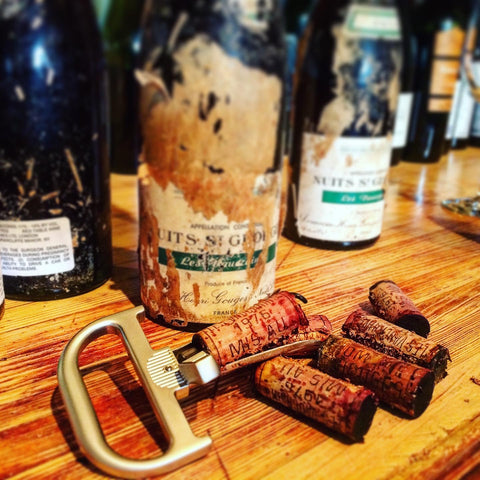Wine has long suffered from an image problem.
Ask a casual imbiber what wine evokes for them and you may see a bead of sweat trickle down their brow.
The wine world conjures up stereotypes of black-suited sommeliers, stately châteaux, manicured vineyards, and a requirement to speak confidently about such things as vintages, grape varieties, terroir, when to carafe, what glassware to use, and how long to cellar wines.
Give someone a pricier bottle of wine and they will invariably ask you the last question.
The superiority of aged wine has cropped up in historical references from the Bible to Thomas Jefferson.

However, widespread use of wine cellars to improve wine, rather than simply store excess volume, is a relatively recent phenomenon. “Before the 1800s, wines were generally unstable and it was risky to keep them too long,” explains wine writer and historian, Rod Phillips. “Nineteenth century wine books don’t talk about cellaring.”
Regardless of when the practice started, cellaring wine became the norm first for wine merchants then aficionados by the early to mid-20th century. Fast forward to the mid-1970s, and access to insider information on vintages and suggested cellaring duration hit the mainstream, with the arrival of publications like Tidings (now known as Quench), Decanter, The Wine Advocate, and Wine Spectator.
The idea that wines from regions like Bordeaux, Barolo, and Burgundy required cellaring to soften tannins and tame acidity was thus an accepted truth for wine lovers. Connoisseurs would seek out older vintages in restaurants and tuck away recent acquisitions for decades-long hibernation, all in the pursuit of drinking fine wines at some distant, lofty peak.
It must then have come as a shock to some, when, in 2013, the Wine Spectator’s Matt Kramer shared his view that “most of today’s fine wines—not all, mind you—will reach a point of diminishing returns on aging after as few as five years of additional cellaring.”

Kramer wasn’t suggesting that the top wines of the day were less age worthy than their predecessors, but rather that advancements in viticulture and winemaking technique had changed these wines structurally.
“Certain stylistic winemaking changes have resulted in wines which are approachable earlier than a generation ago,” explains Guy Seddon, fine wine director at Corney & Barrow. “The use of whole bunch fermentation, gentler pressing, and less new oak have contributed to wines which are more accessible in youth.”
The wines have certainly changed, but so have the consumers. Tonya Pitts is the sommelier and wine director at One Market Place in San Francisco. In recent years, she has seen a definitive move “to imbibe with fresher, more vibrant flavor profiles.” This, she explains, is achieved through more youthful, lighter wines.
Taking this logic one step further, Michael Madrigale, fine and rare wine consignment director at Heritage Auctions, and former Bar Boulud wine director, points to the rise of natural wines. “These wines are not meant to be aged at all,” he explains. “In fact, they are almost made to be consumed within the first year.”
In Madrigale’s opinion, younger generations that have grown up with natural wines are increasingly unfamiliar with aged wine profiles. “A large, emerging demographic has been spoon-fed the philosophies of natural wine and has in turn based a lot of their purchasing in natural wines.”
Whether the transition to drinking younger wines was led by evolving patterns in viticulture, winemaking practices, consumer preference, or new wine styles, the fact remains that older wines are harder to come by in today’s restaurants and from wine merchants. “Restaurants like the Tour d’Argent—that can hold wine for 20 years before they put it on the list—don’t really exist anymore,” says Madrigale.
In some ways, the idea of tossing out the vintage charts and the cellaring rule book seems like a positive step for an industry long deemed overly complex and elitist. Though Corney & Barrow still provide drinking ranges to guide clients, Seddon feels that “where the peak of deliciousness lies is fairly subjective.”
While Seddon has a highly wine literate clientele with the means to purchase and cellar fine wines, Pitts sees a wide diversity of consumers in her work. “Not everyone has access to cellars, or to smaller production natural wines, to old world or to new world wines,” she explains. “We all start our wine journey somewhere.”
This drive to help newcomers embrace wine is shared by Jermaine Stone, aka The Wolf of Wine. Budding hip hop artist turned fine wine auction house director, Stone now owns Cru Luv Selections, a wine importing and consultancy firm in New York.

“I think the thing that wine has to do is stop telling people how to enjoy it,” Stone laughs. With his popular Wine and Hip Hop podcast and Tasting Notes from the Streets events, Stone is breaking away with staid conventions around wine drinking and reaching out to a previously untapped demographic.
“The beautiful thing about our events is that they attract two different types of crowds,” he explains. “I have guys who are clearly not familiar with wine that leave with a newfound appreciation for it because they were approached differently; it was integrated with something that they were already subscribed to.”
For both Pitts and Stone, the ultimate goal is to see wine drinkers progress in their appreciation and understanding. “The more you know, explore, and taste, the more you want to learn and discover,” says Pitts. In Stone’s view, teaching people how fine wines evolve over time is a powerful draw.
Far from alienating newcomers, Stone sees wine’s luxury image as a strength. He dismisses the idea that younger generations simply can’t afford the high price tags for top crus, pointing to the designer sneakers, watches, and handbags they prize.
“People have the money,” he says. “They just don’t have the reverence for the product. If they don’t think that it’s special, they won’t want to collect it.” His aim is to make this luxury approachable, so that people want to invest.
Stone is returning to his auction house roots for just this reason. Fine wine auctions are one of the few remaining sources of cellared wines, from great value $18 Hautes Côtes de Beaune to top crus. Stone wants to bridge the gap from the exclusive auction house setting, bringing their wines to a wider audience.

“You can buy second to fifth growth Bordeaux from the 1970s in pristine condition, at under $100 per bottle on auction,” says Madrigale, backing up Stone’s appreciation for auction values. “This is often less than the current release price from the château.”
Of course, the kind of wines sold at auction are a fraction of what is being produced today. Not everyone can or wants to buy wines by the case through specialist channels, just as not everyone has the means or desire to purchase designer goods.
The world of wines has undergone an incredible diversification since the turn of the century. New wine styles have exploded onto the scene, and new waves of wine professionals and consumers have overturned the formalities once so closely tied with wine connoisseurship.
There is no denying however, that fine wines still have an important role to play in this brave new world. Their cult status casts a glow that illuminates wine on every level. Compelling tales of unique terroir and legendary winemakers are a large part of their appeal. But what sets fine wines apart from other luxuries is their power to evolve, to transform over time.
-
Private Cellar, Napa, California
-
Private Cellar, Dallas-Fort Worth Collection
-
Underground Cellars at Bouchard Père et Fils
-
1976 Henri Gouges Nuits St. George, Les Vaucrains 1er Cru



